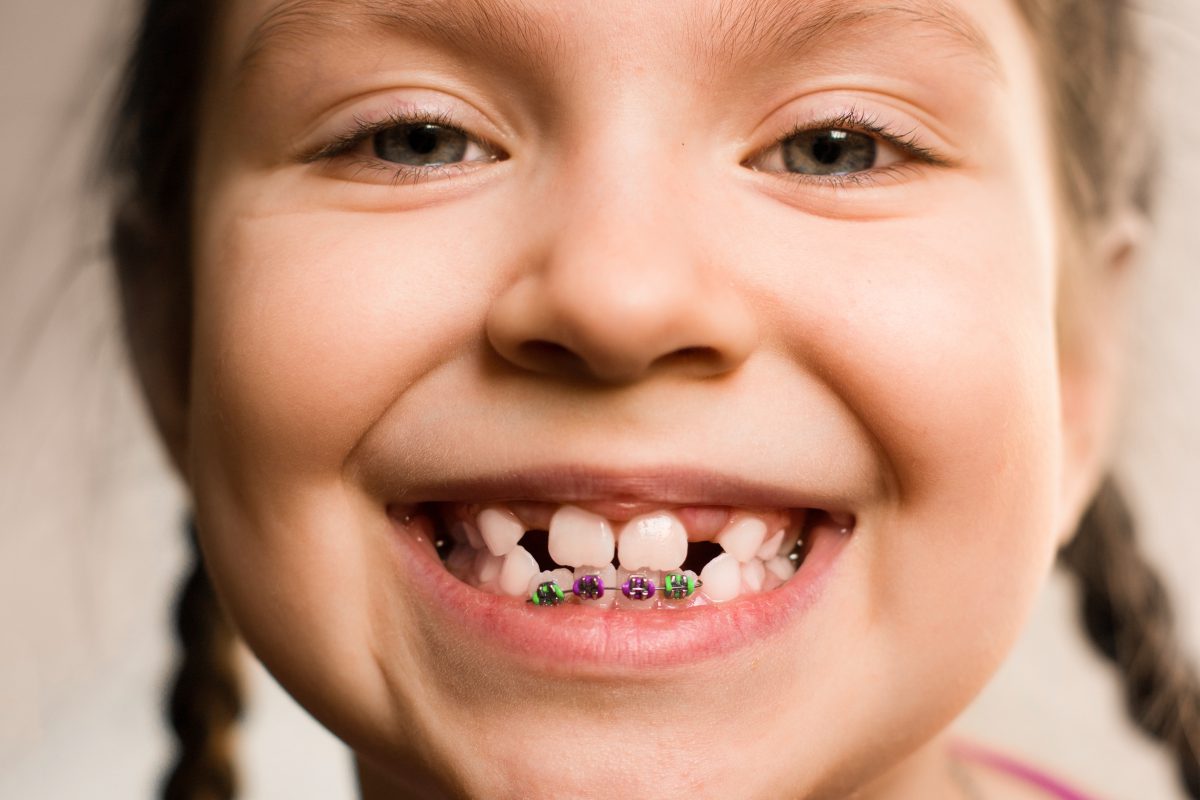What is Two Phase Orthodontic Treatment?
Once your child has completed his or her orthodontic evaluation with us, you may hear us refer to something called Developmental Orthodontics. If you are new to this term, it can seem a bit daunting. Thankfully, it’s not as intimidating as it sounds; it’s actually pretty straightforward. Developmental Orthodontics is just an orthodontic process that is recommended and completed before all of the adult teeth have come in. It doesn’t involve straightening all the teeth. Instead, it involves correcting a skeletal imbalance or other developing problem that shouldn’t wait to be corrected. By correcting certain orthodontic problems as soon as they are found, even before the remaining permanent teeth are in, facial harmony and balance can be improved dramatically and future treatment can oftentimes be kept to a minimum. This type of treatment helps us at Berkman and Shapiro Orthodontics to deliver a long-lasting, healthy, beautiful smiles to our patients.
Developmental Orthodontics is usually done earlier than regular (also called Comprehensive) orthodontic treatment. Because of the early work being done, orthodontic issues still in their initial stages can be improved or even completely fixed so they don’t develop into serious problems down the line. Treatment usually starts between the ages of eight to ten, while permanent teeth are still arriving.
Once all permanent have erupted, then Comprehensive Orthodontics may be indicated. Used to align the permanent teeth and establish a healthy bite for a lifetime, Comprehensive treatment can’t be performed while baby teeth are still present.
In our office, the same thing is never done twice! The orthodontic work done during Developmental Orthodontics and Comprehensive Orthodontics are two very different things. And to put your mind at ease, it doesn’t cost twice the money or take twice the time either.
Still a little fuzzy on what two-phase treatment entails and want to get a feel for the finer details? Let’s take a closer look.
Developmental Orthodontic Treatment

When a young patient (whose permanent teeth are still coming in) has a problem that is getting worse, we sometimes recommend Developmental Treatment. This may be a treatment to help a tooth that is impacted (stuck), a palate that is narrow, a thumb habit that is making front teeth stick out, or a tooth that is being damaged as other teeth are forming. The treatment we perform typically does three things: corrects the problem currently happening, averts future potential issues, and adjusts the child’s growth and dental development to minimize future risk.
Developmental Treatment occurs between the ages of eight to ten, so patients usually still have their baby teeth and are also getting their permanent teeth during this phase. Again, it is only suggested when there is a dental or jaw development problem that would progressively worsen if left untreated.
Many children don’t require orthodontic treatment so early in their lives. To be sure about your child’s dental development, the American Association of Orthodontics and our own Drs. Berkman and Shapiro highly recommend children receive their first orthodontic evaluation by age seven. The best way to ensure your child’s growth and dental development is on track is to be as healthy as it can be.
Developmental Orthodontics is commonly recommended by orthodontists for things such as: 
- underbites
- open bites (situations in which the front teeth do not contact)
- severe crowding or spacing of the teeth
- dental crossbites
- dental or skeletal asymmetries
- skeletal crossbites
- disproportionately overlapping or deep bites
- jaw growth or jaws that are not in proportion to each other
- severely protruding teeth
- the instance of unhealthy oral habits, such as extended thumb-sucking, bottle, or pacifier use
- clefts
A Period of Rest
All teeth are not in their final positions at the end of Developmental Orthodontics; they are only aligned to their permanent positions during Comprehensive Treatment. A period of rest is therefore instated following Developmental Treatment so that the permanent teeth have an opportunity to emerge into a more healthy position. During this period of rest, retainers are typically not used. This is because teeth should not be held in place too tightly as the remaining permanent teeth are coming in.
Comprehensive Orthodontic Treatment

After Developmental Treatment in Phase I and a resting period, some patients can benefit from Comprehensive Orthodontic Treatment. Many patients are somewhat familiar with the orthodontic treatments that happen in this phase.
Usually, Comprehensive Treatment consists of installing braces on the upper and lower teeth. Here, we pay special attention to ensure that each tooth has a dedicated, optimal place in the mouth where it can peaceably exist among the lips, tongue, cheeks, and other teeth. Using orthodontics, we can achieve this balance and teeth can finally function together as they are intended…for a lifetime!
After Treatment
Once you’ve completed Comprehensive Treatment, you will probably be given retainers to help preserve your results. Retainers are important to limit the relapse that always occurs to some degree, so you can keep your beautiful, straight smile for years to come.
Undergoing Treatment with Berkman + Shapiro Orthodontics
Both Dr. Berkman and Dr. Shapiro are extremely conservative and believe in letting nature take its course whenever possible. For this reason, most of our patients do not undergo an early phase of Developmental Treatment. When it is indicated, however, it is extremely helpful and saves parents both time and money in the end. In many cases, early identification of a problem is the is the best way to get long-lasting, permanent results.
If your child is already seven and has not yet seen an orthodontic specialist for an evaluation, please see us for a complimentary evaluation. We’ll be sure to answer all of your questions and provide you with excellent information about what to expect in the future. We are excited to meet you and help you get on the road to a healthy, beautiful smile.






